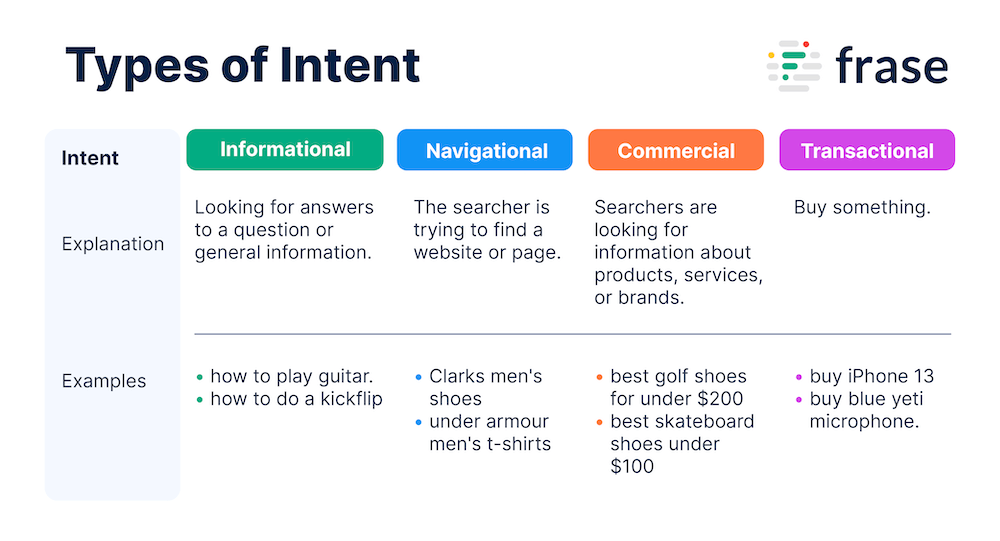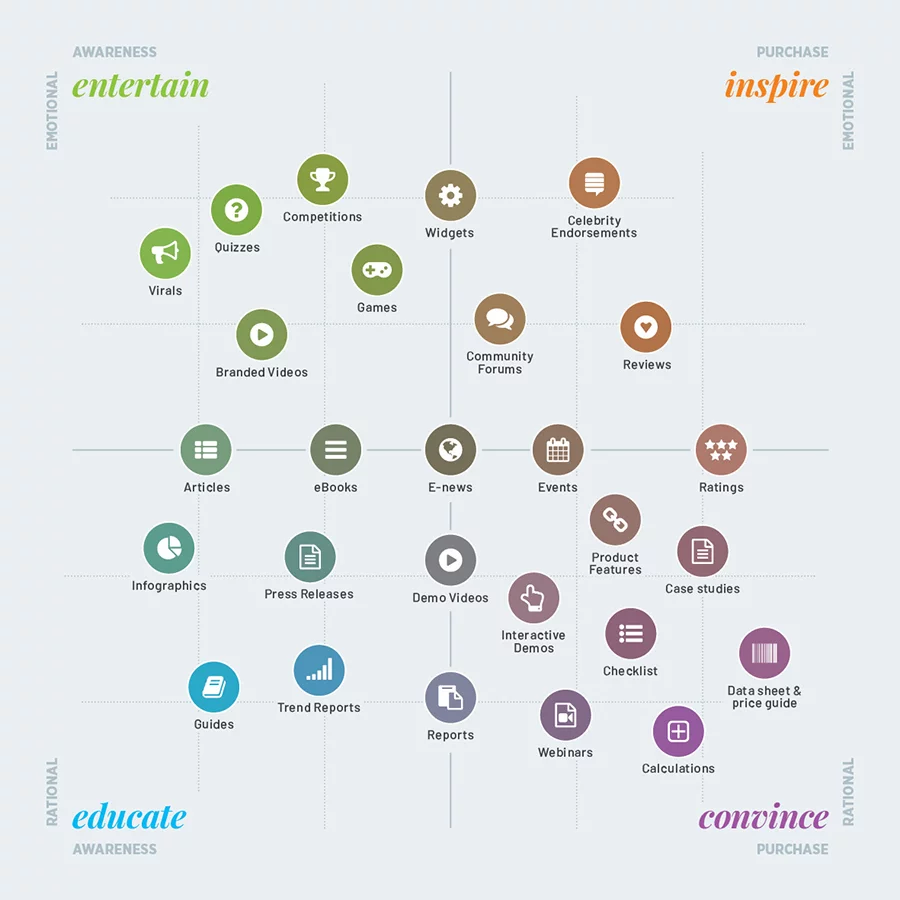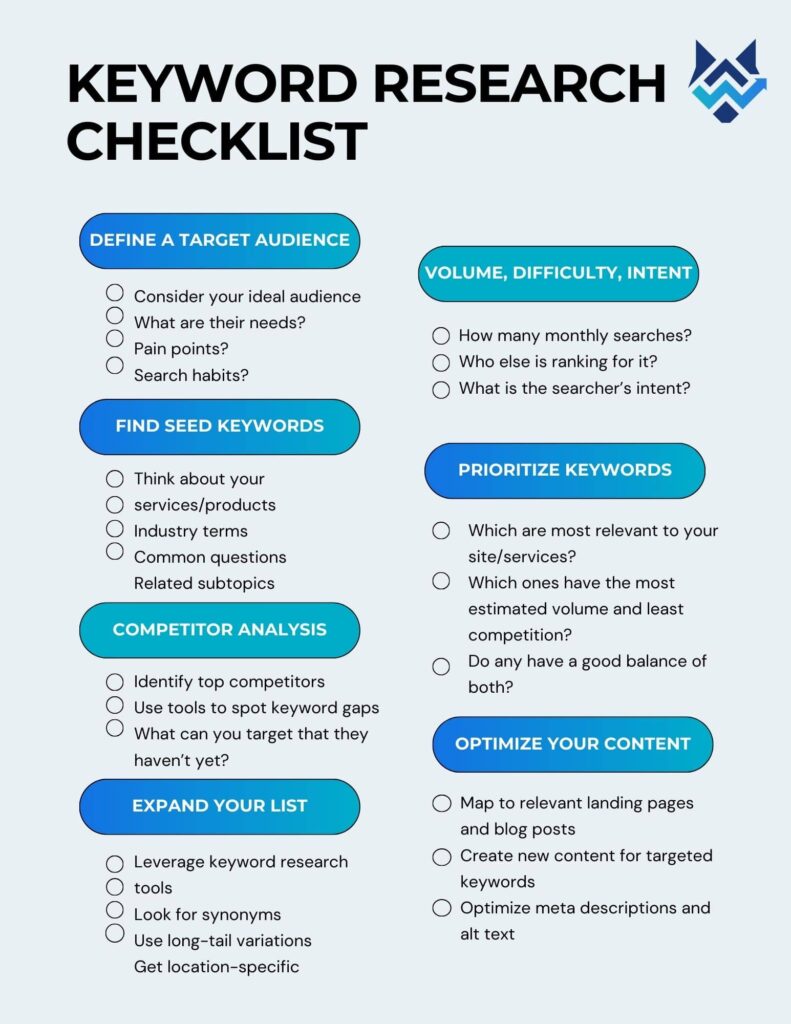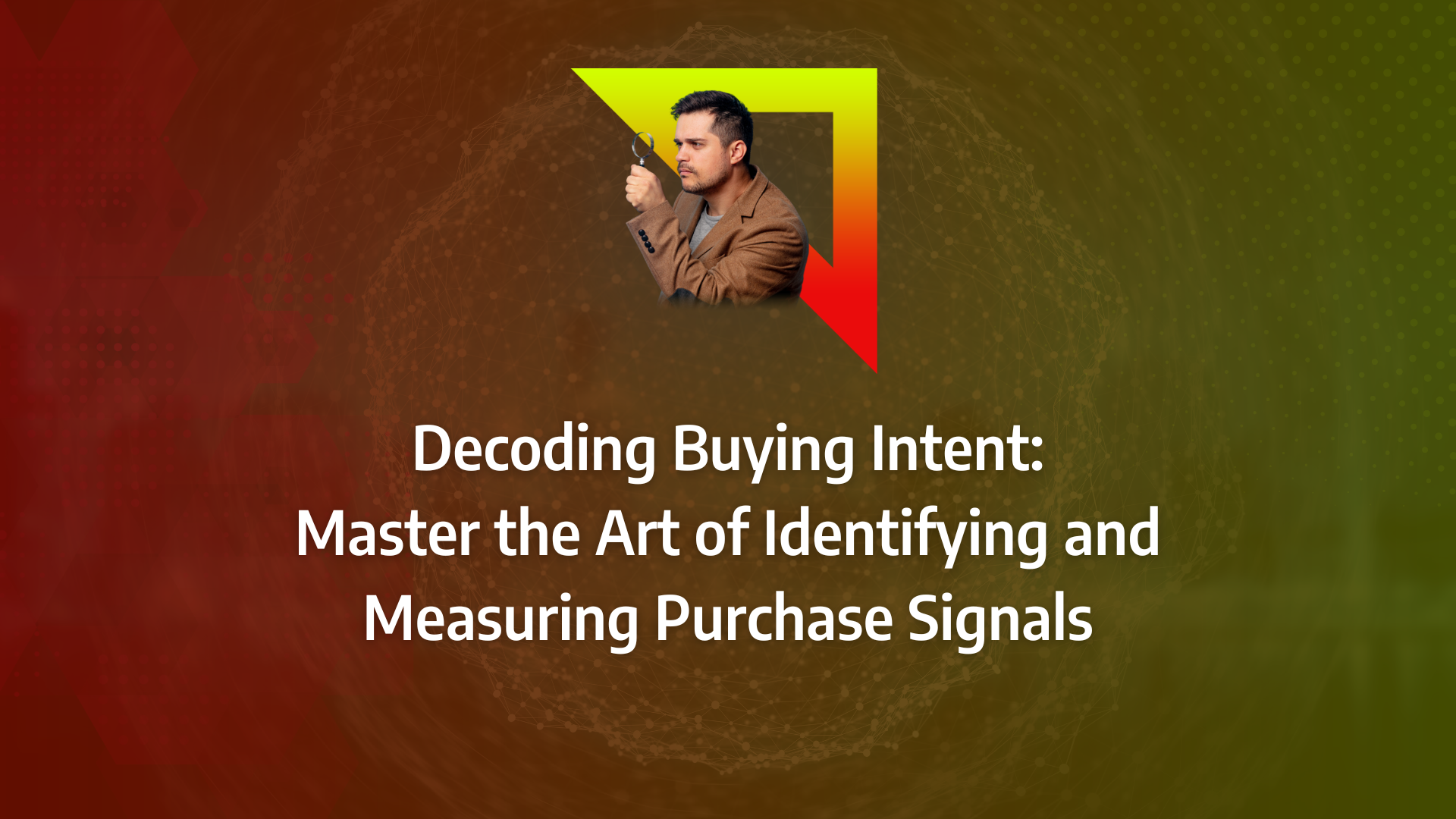Have you ever wondered how much potential revenue slips through your fingers simply because your team couldn’t decipher the subtle signals of a ready-to-purchase prospect? It’s a common frustration for many businesses, especially when the stakes are high, and every missed opportunity could mean a lost deal. Imagine the advantage you’d have if you could read your buyer’s mind, knowing exactly when they’re ready to engage and what they’re looking for.
This is the power of buying intent—transforming vague interest into actionable insights that can drive your marketing and sales strategies. But how do you decode these signals effectively? How do you ensure that your approach is not only insightful but also impactful?
In this blog post, we’ll explore the art and science of identifying and measuring buying intent. You’ll discover proven strategies for capturing these signals and learn how to integrate them seamlessly into your marketing and sales processes.
- Buying intent is crucial for refining your marketing and sales strategies, allowing you to target prospects at the right time with the right message.
- Utilising intent data platforms can help you track and interpret buyer signals, turning them into actionable insights that enhance lead scoring and personalisation.
- Integrating buying intent data into your existing marketing and sales workflows requires careful planning, but it pays off with increased conversion rates and better alignment between departments.
- Overcoming challenges such as data privacy concerns and system integration is essential to fully leverage buying intent signals in your business strategy.
- Future trends in buying intent include the growing role of AI and the use of cross-channel data to create a more holistic view of the buyer’s journey.
What is Buying Intent?
Buying intent, often referred to as purchase intent, is the likelihood and inclination of a potential customer to make a purchasing decision. It encapsulates the motivation, need, and desire that propel individuals and organisations to explore, evaluate, and ultimately invest in a product or service.
However, it’s essential to understand that buying intent doesn’t function as a simple yes-or-no decision. Rather, it operates along a spectrum, which can be broken down into two primary stages:
Informational Intent
This stage marks the initial phase of the buyer’s journey, where the customer might not even be fully aware of their buying intent. At this point, they’re often in discovery mode, searching for ways to solve a particular problem or exploring a wide array of available solutions.
During this informational intent phase, the customer is primarily engaged in research—seeking knowledge about products, services, or potential solutions. They are pinpointing pain points, identifying potential options, and starting to comprehend how certain offerings can meet their specific needs. It’s a critical phase where businesses need to ensure they provide relevant information that satisfies the curiosity of prospects who are still forming their buying intent.
Transactional Intent
Once a customer has completed their research, assessed various options, and narrowed down the possibilities, they move into the transactional intent phase. At this point, they are ready to make a purchasing decision. Their intent is clear—they know what they want, and they are actively seeking the best vendor to fulfil that need.
In the case of products, this often involves evaluating several vendors to find the right fit. For more complex solutions, such as software, the decision may centre on whether to choose a customised solution or opt for an off-the-shelf product. For example, a company searching for an ERP system might lean towards a custom solution if they require unique functionalities not found in standard offerings.

Factors that Influence a Consumer’s Likelihood to Buy
A variety of elements can sway a customer’s buying intent. Understanding these factors is key to anticipating how and when a customer might shift from informational intent to transactional intent. Based on multiple sources, the most significant influencers include:
- Global Economic Conditions: The financial well-being of your target audience directly impacts their purchasing power. In times of economic downturn, buying intent is more likely to remain in the informational stage, as individuals may be hesitant to commit to purchases.
- Perceived Customer Value: How much value a potential buyer sees in your product or service plays a huge role in shaping their buyer intent signals. If the perceived benefits are clear and compelling, the customer is far more likely to move into the transactional intent stage.
- Social Commerce Factors: Positive customer reviews, ratings, and recommendations can significantly boost a brand’s appeal. These forms of social proof can influence a prospect’s purchase intent data, encouraging them to choose your offering over competitors.
- Brand Image: The overall perception of your brand affects how ready consumers are to engage with your product, particularly at the decision-making stage of the marketing funnel. A strong brand image can be the tipping point for converting a prospect into a buyer.
- Visual Merchandising: The design, colour schemes, and overall aesthetics of your online presence—whether it’s your website, social media, or email campaigns—are as crucial to conversion as a well-designed physical storefront. First impressions count, and optimising these elements can trigger immediate shifts in b2b buyer intent data.
What Matters Most?
We typically find aligning your sales and marketing teams around a unified understanding of buyer personas often leads to enhanced engagement. Clients typically discover that crafting content that anticipates buyers’ questions at each stage of their journey can significantly impact their purchasing decisions. Additionally, leveraging insights from community interactions helps identify emerging intent trends, allowing us to tailor marketing efforts effectively and connect with our audiences in meaningful ways.Get In Touch
Intent Data Overview
Before we dive deeper into buying intent, it’s essential to grasp the concept of intent data and how it plays a pivotal role in predicting a potential customer’s purchasing decision. Intent data, also referred to as buyer intent data or purchase intent data, offers insight into the online behaviour of your target audience. It provides a window into whether a prospective buyer is likely to make a purchasing decision within your industry.
To fully leverage buying intent, you need to understand the various types of intent data and their sources. There are two primary categories: first-party intent data and third-party intent data.
First-Party vs. Third-Party Intent Data
- First-party intent data is gathered directly from your own website or platforms. This could include forms filled in by visitors, data collected from gated content, or even tracking IP addresses of site visitors.
- Third-party intent data is sourced from external websites and platforms. This type of data includes similar information, such as filled-in forms and IP addresses, but is collected by intent data providers, like Bombora, and then shared with companies like yours to inform marketing and sales strategies.
How do I get buyer intent data?
Understanding the types of intent data sources is crucial for identifying and responding to buyer intent signals. There are four key types:
- Search Intent Data This type of data is collected when a potential buyer uses search engines like Google to search for specific keywords or phrases. Search intent data allows you to identify the topics that matter most to your target audience. For example, if you sell sales intelligence software, identifying companies searching for terms like “How can I make prospecting easier?” offers a clear indication of buying intent. Armed with this knowledge, you can engage prospects before your competitors do.
- Engagement Data Engagement data refers to how prospects interact with content, such as reading, sharing, or commenting. This data is often sourced from channels like your blog, website, or social media platforms, such as LinkedIn, Facebook, or Twitter. A great example of this is “dark social” sharing, where prospects distribute valuable content across platforms like Facebook Messenger, which are difficult to track. By recognising these buyer intent signals, you can offer more personalised content or initiate a sales conversation at the right time.
- Firmographic Data Firmographic data includes detailed information about a prospect’s organisation, such as company size, location, industry, and revenue. This data is usually obtained from business directories or B2B data providers. Integrating firmographics with Account-Based Marketing (ABM) strategies can help you focus on companies more likely to convert. For instance, targeting a company based on its industry and size will ensure your efforts are directed at the right prospects, significantly increasing the chance of conversion.
- Technographic Data Technographic data focuses on the technology stack of a prospective company—its software, hardware, and network infrastructure. This information is typically gathered via surveys, polls, or questionnaires, and helps you understand a company’s technical capabilities. For instance, if your target customer uses an outdated CRM system, you could pitch data enrichment services or suggest an upgrade to your superior solution, offering tangible value that meets their specific needs.
Source: Bombora
How is Buyer Intent Data Collected?
Buyer intent data is generated through the analysis of billions of behavioural signals gathered from a vast range of B2B websites and media publishers. These signals, which track online behaviour, are aggregated by third-party vendors on a weekly basis.
These data signals cover an array of topics, indicating trends and surges in interest within specific subject areas. For instance, if a spike in interest emerges among B2B buyers seeking a marketing automation platform, this trend is reflected in the data, signalling an increase in purchase intent.
Given the immense volume of raw data generated, manual processing would be nearly impossible. This is where algorithms come into play, identifying patterns and surges in topic searches to provide actionable insights into buying intent.
Much like website tracking and analytics, the collection of buyer intent signals operates on similar principles. Key behavioural indicators include:
- Cookies to identify individual users
- Traffic sources that highlight where visitors originate
- Time spent on specific pages or the overall site
- Content volume consumed by the user
- Scroll depth and speed, which indicate engagement levels
- Types of content being consumed by visitors

These indicators allow businesses to track engagement, enabling the identification of users with high buying intent based on their behaviours and interactions.
Measuring Buying Intent in Your Market
Understanding how to measure buying intent within your target market is critical for crafting effective marketing strategies. Several key factors influence purchase intent:
Website Navigation
Data analytics can reveal valuable insights into how visitors interact with your website, shedding light on their buyer intent signals. The way users navigate your site indicates their areas of interest. Some visitors may actively search for information, while others may immediately buy with minimal research. Alternatively, some might be exploring your products and services for future reference. Recognising the types of customers frequenting your site can help you optimise their experience and improve conversion rates.
Online Checkout Navigation
Tracking user behaviour during the online checkout process offers another way to measure purchase intent. Each step a customer takes throughout the checkout process presents opportunities to engage with them more effectively. Offering discount codes, complementary products at reduced prices, or requesting feedback can help increase satisfaction and completion rates. A streamlined, efficient buying process increases the likelihood that customers will return and continue purchasing from your site.
Engagement and Communication
Maintaining consistent engagement and communication with your loyal customers is essential for developing an effective sales strategy. By keeping communication channels open, you can continuously gather information on your customers’ needs and adapt your marketing solutions in response to market changes or seasonal shifts. This ongoing interaction helps you anticipate their buying intent and tailor your outreach to maximise conversions.
How to Measure Purchase Intent Using Surveys
Brand Tracking Surveys
Brand tracking surveys are a valuable tool for gauging purchase intent data. These surveys measure various aspects of your brand’s health, such as brand awareness, usage, reputation, image, and perception. If customers hold a positive view of your brand and are familiar with it, their likelihood of making a purchase increases. However, as brand perceptions fluctuate, it’s important to regularly track changes in brand health to stay ahead of potential shifts in buying intent.
Product Testing Surveys
Product testing surveys provide another method for measuring purchase intent. These surveys allow customers to try your product over an extended period and offer feedback based on their experiences. For example, furniture companies often permit customers to test out products at home for weeks or months, enhancing customer satisfaction and increasing the probability of a purchase. Use product testing surveys to gain insights into your customers’ likelihood of completing a purchase based on their product trials.
Social Media
Social media platforms like Facebook, TikTok, and Instagram provide a vast array of user data that can be harnessed to measure buyer intent signals. By tracking user interactions and content sharing, you can gather critical information to build a targeted marketing strategy that resonates with your audience. Social media is a cost-effective way to amplify your brand’s visibility and reach thousands of potential buyers without straining your marketing budget. By understanding where your target audience spends their time, you can align your marketing efforts to capture their attention and influence their buying intent.
How do you identify buyer intent?
Successfully identifying buying intent requires an in-depth understanding of user behaviour across various digital touchpoints. To gauge a potential buyer’s readiness to make a purchase, you need to assess several key indicators, from the content they consume to the actions they take while navigating your website. By effectively measuring these signals, businesses can sharpen their marketing efforts and target prospects more precisely.
How to Assign Purchase Intent Scores
Assigning purchase intent scores involves a detailed analysis of user behaviour. By tracking a range of online activities, you can build a clearer picture of your audience’s buying intent. The following factors are critical to calculating intent:
- Content Consumption: What topics are users reading about? Are they exploring product-related information or industry-specific content?
- Device Usage: Are they browsing via mobile, desktop, or tablet? Different devices may indicate varying levels of purchasing interest.
- Traffic Source: Understanding whether users come from organic search, paid ads, or referral links can offer insights into their intent.
- Time on Site: How long are visitors spending on your website? More time generally reflects stronger buying intent.
- Page Views: Which pages are they exploring? Product pages, pricing sections, or case studies often signal higher purchase intent.
Tracking these behaviours allows you to assign accurate purchase intent data and prioritise outreach to high-intent prospects.
Source: DemandGen Report
How to Identify Buyer Intent in Your Target Audience
To effectively target your ideal customers, it’s vital to first define who your audience isn’t. Being specific about the segments that are less likely to convert will help you focus your efforts on those with a stronger buying intent.
A key strategy for this is leveraging buyer intent keywords—the search terms people use when actively considering making a purchase. These keywords signal a clear intent to buy, allowing you to tailor your marketing strategy to attract the right visitors.
Types of Buyer Intent Keywords
Prospective customers at different stages of the buying journey (such as the AIDA funnel) typically share similar goals, problems, and informational needs. By targeting the appropriate buyer intent keywords, you can engage them with content that aligns with their position in the funnel.

Awareness-Stage Keywords
At the awareness stage, users are seeking a deeper understanding of the challenges they face or specific objectives they aim to achieve. This is where they first become aware of your brand as a potential solution provider. Common phrases include:
- “How to”
- “What is”
These buyer intent keywords are focused on gathering information and learning more about the problem they’re trying to solve.
Interest-Stage Keywords
Once prospects are aware of the potential solutions to their issue, they move into the interest stage. Here, they begin actively evaluating different options. During this phase, they’ll be searching for content that helps them compare products and make informed decisions. Common interest-stage phrases include:
- “[Product name] reviews”
- “Best [product]”
By optimising your content for these buyer intent signals, you can position your brand as a trusted resource that helps them move closer to a purchasing decision.
Decision-Stage Keywords
At the decision stage, prospects are ready to take action but may need a final push to complete the purchase. Buyer intent keywords at this stage are much more transactional, indicating a high level of buying intent. These keywords include:
- “Buy now”
- “Discount”
Focusing on these decision-stage phrases will ensure you capture leads who are on the verge of converting, making your marketing efforts more efficient and targeted.
Our Tactical Recommendations
From our experience, investing in intent data platforms typically enhances your ability to understand buyer preferences, leading to more effective outreach. Clients often discover that actively listening to buyer feedback provides crucial insights into changing intent, which can guide future strategies. Moreover, monitoring real-time buyer behaviour allows us to swiftly adjust our marketing tactics, ensuring we remain aligned with evolving buyer needs and motivations.Get In Touch
What are the best buyer intent providers?
Understanding buying intent is essential for effectively targeting high-intent prospects and improving your lead generation efforts. Below is a selection of the top tools designed to help businesses capture buyer intent signals and refine their marketing strategies. Each of these platforms provides unique insights into purchase intent data and offers features that allow you to engage potential buyers more effectively.
1. Cognism
Cognism is a comprehensive sales intelligence platform that provides access to company and contact data. One of its standout features is its integration with intent data from Bombora, which allows businesses to find organisations within their Ideal Customer Profile (ICP) that demonstrate clear buying intent.
Cognism enriches this b2b buyer intent data by offering key contact details, such as the B2B emails and phone numbers of decision-makers. This combination enables precise, targeted prospecting, allowing sales teams to engage leads early in their buying journey.
For example, your team could identify companies searching for either your solution or a competitor’s and reach out to them proactively, capturing their buying intent before they make a final decision.
2. Bombora
Bombora provides high-quality buying intent data that is both up-to-date and ethically sourced. Built on a co-op system, Bombora’s data is not siphoned or scraped but collected from a vast network of over 5,000 B2B websites.
By tracking prospects’ digital behaviour, Bombora empowers sales and marketing teams to focus on companies that are currently in the market to buy. Its exclusive dataset—70% of which is unavailable from any other source—detects surges in content consumption within organisations. When content engagement spikes beyond typical thresholds, Bombora flags this as a strong signal of buyer intent.
3. Triblio ABM Platform
Triblio is a powerful platform for Account-Based Marketing (ABM) that allows businesses to target high-priority accounts with messages and topics that truly resonate. Triblio’s proprietary B2B buyer intent data helps you predict which accounts are actively researching in your market, enabling you to engage them at the optimal time.
This platform works seamlessly with your own first-party intent data, enhancing your ability to convert more stakeholders within your target ABM accounts. By identifying and engaging key decision-makers early, Triblio helps maximise the effectiveness of your ABM strategy.
4. Lead Onion
Lead Onion is another advanced tool that delivers accurate b2b buyer intent data to help businesses identify and target high-quality prospects. The platform offers built-in communication features, making it easier to reach out to the most engaged leads in real-time.
Lead Onion also provides advanced audience segmentation tools, matching leads with ideal buyer personas. Additionally, it offers unlimited contact storage, serving as a comprehensive data solution, lead intelligence, and sales enablement platform.
5. G2 Intent
G2 is a widely-used platform that tracks and segments website visitor buyer intent signals. With over 20 integration options, G2 can alert you when existing buyers are considering switching to a competitor, providing you with an opportunity to act quickly.
By leveraging these insights, your marketing team can craft custom pitches or solutions to overcome potential objections and retain existing customers. G2’s real-time data enables businesses to respond to shifts in buying intent before it’s too late.
6. 6Sense
6Sense removes guesswork and wasted effort from the lead generation process by using artificial intelligence to capture buyer intent signals. The platform tracks anonymous buying behaviours, allowing B2B marketers to identify high-intent accounts without needing direct user identification.
6Sense’s AI-driven capabilities enable it to recommend the most effective messages and channels for reaching potential buyers. This precision helps businesses maximise conversions by targeting the right accounts at exactly the right time.







